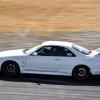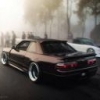-7/9s Or -5s Garretts
Announcements
-
Similar Content
-
Latest Posts
-
Haha actually I did join back then under a different email address, I couldn't re-activate my account so made a new one! I didn't post much anyway so not missing out on much. Amazing to see how the value of the cars and parts has changed over the years, also ACT section appears to be dead now.
-
Thanks... It's in pretty good condition overall, probably due to not being drifted/tuned however being a daily driver has taken its toll. Had 100k on the clock when I got it, up to 180k now. Unfortunately it's not 100% dent free, it's got a small dent on FLH side and broken indicator from where I hit a small kangaroo at high speed. If you look at closely at pic #5 you might spot the dodgy trailer light repair my old man and I rigged up as temporary repair! - It's still there due to a combo of needing the car as daily driver and then too lazy/busy to fix properly. I've a couple of other minor accidents accidents as well but nothing major. One required a new front bar and unfortunately the smash repairer ordered the normal gtst one and not the aero bar. Needed the car back asap so just went with it, regretted ever since.
-
I can't believe that anyone is foolish enough to believe that the base maps are for any other purpose than to drive the car up onto the trailer/truck or gently creep it to the dyno. No matter how good they are, they can never be any better than the factory maps**, and only the foolish trust those on a significantly modified setup. **Yeah, yeah. I know there's also the difference between factory maps being fixed to certain injector sizes and MAP/AFM/VE relationships, and the likely aftermarket ECU base maps being better able to handle the sorts of changes that would render a stock ECU dangerous, like different sized injectors. But let's just ignore that for the moment, because the principle is still the same.






Recommended Posts
Create an account or sign in to comment
You need to be a member in order to leave a comment
Create an account
Sign up for a new account in our community. It's easy!
Register a new accountSign in
Already have an account? Sign in here.
Sign In Now